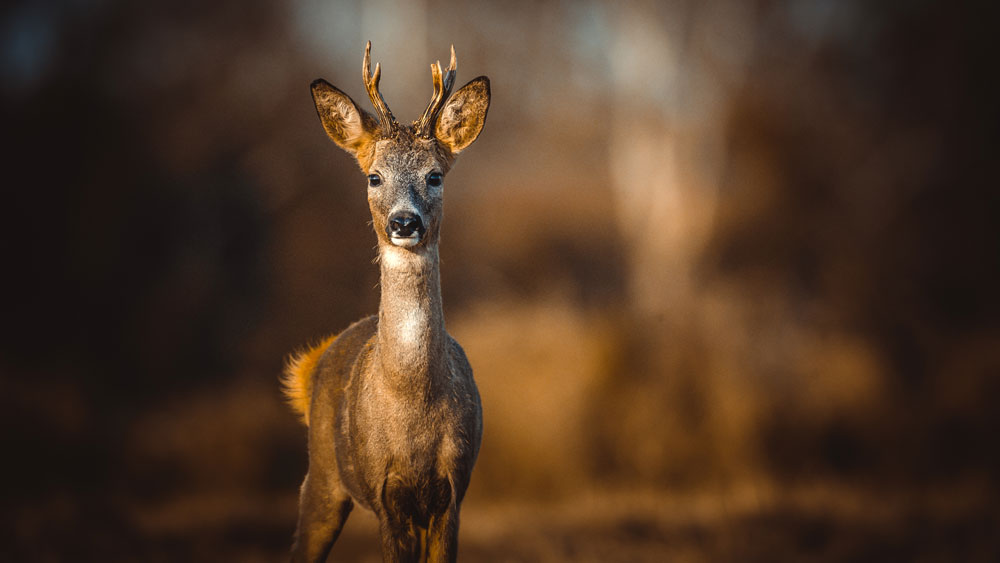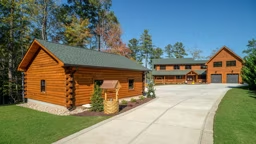
Photo: Adobe Stock ©gustav
Part of the appeal of a log or timber home in a woodsy spot is spying on the abundant wildlife scampering about the grounds: turkeys, grouse, deer — even wolves and bears. But when it comes to the impact these creatures can have on your landscape, sharing your yard with them becomes much less charming.
Unless you want to build a castle-worthy wall around your property (not ideal for enjoying the woods) you’ll need to make peace with the locals. That doesn’t mean you need to surrender your garden, though. Here are some compassionate strategies to consider:
Motion-activated floodlights and sprinklers:
Deer usually prefer to eat at night, which is why you might notice your shrubs are nibbled down in the morning. If you’re seeing initial damage, install floodlights and/or sprinklers that will illuminate or spray that area, and put them on a motion sensor so they turn on when the deer come back for a midnight snack.
Strategic planting and fencing:
If you haven’t done all your planting yet, think with a prevention mindset. It’s much easier to deter deer if you plant and fence in one area from the start, rather than cover acres of your property with gardens and then try to secure it.
Talk radio:
For animals that are skittish around people, such as deer and coyotes, one simple fix is to put a weatherproof radio outside near the edge of the woods where you may have seen animals emerging in the past. Keep it on a talk radio station rather than music, because it’s the sound of voices that will make them hesitate to investigate.
Plant aromatics and buy some soap:
Deer don’t like strong smells, so plants that have plenty of fragrance make a great addition to the garden — and, as a bonus, you can eat them, too. Top choices include garlic, chives, lavender and catmint. Some gardeners also have had luck with using unwrapped bars of soap hung in mesh bags around the perimeter of a garden area. Be sure to choose one with a strong scent.
When to call in the professionals:
In some cases, occasional wildlife may become more than a nuisance. If you’re seeing particularly aggressive bears, for example, call your local officials from the Department of Natural Resources, since they need to know about those situations and may have additional strategies and resources that can help. Keep in mind that protective “mama bears” can be the most unpredictable.
*Editor's Note:
In our March 2021 print issue, we also mentioned using mothballs as a way to deter unwanted animals from your property. Since publication, an avid reader and wildlife biologist has enlightened us to the fallacy in this recommendation. If ingested, mothballs can be toxic to both animals and humans (children are most susceptible) and we’d never want to cause harm. We regret the error.
In our March 2021 print issue, we also mentioned using mothballs as a way to deter unwanted animals from your property. Since publication, an avid reader and wildlife biologist has enlightened us to the fallacy in this recommendation. If ingested, mothballs can be toxic to both animals and humans (children are most susceptible) and we’d never want to cause harm. We regret the error.
Learn more about log home pest control here!











